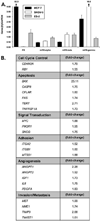Membrane progesterone receptor expression in mammalian tissues: a review of regulation and physiological implications
- PMID: 20869977
- PMCID: PMC3005015
- DOI: 10.1016/j.steroids.2010.09.006
Membrane progesterone receptor expression in mammalian tissues: a review of regulation and physiological implications
Abstract
The recent discovery of a novel, membrane localized progestin receptor (mPR) unrelated to the classical progesterone receptor (PR) in fishes and its subsequent identification in mammals suggests a potential mediator of non-traditional progestin actions, particularly in tissues where PR is absent. While early studies on mPR focused on final oocyte maturation in fishes, more current studies have examined mPRs in multiple mammalian systems in both reproductive and non-reproductive tissues as well as in diseased tissues. Here we review the current data on mPR in mammalian systems including male and female reproductive tracts, liver, neuroendocrine tissues, the immune system and breast and ovarian cancer. We also provide new data demonstrating mPR expression in the RAW 264.7 immune cell line and bone marrow-derived macrophages as well as mPR expression and downstream gene regulation in ovarian cancer cells.
Copyright © 2010 Elsevier Inc. All rights reserved.
Figures



References
-
- Josefsberg Ben-Yehoshua L, Lewellyn A, Thomas P, Maller J. The role of Xenopus membrane progesterone receptor β in mediating the effect of progesterone on oocyte maturation. Mol Endocrinol. 2007;21(3):664–673. - PubMed
-
- Thomas P, Zhu Y, Pace M. Progestin membrane receptors involved in the meiotic maturation of teleost oocytes: a review with some new findings. Steroids. 2002;67(6):511–517. - PubMed
Publication types
MeSH terms
Substances
Grants and funding
LinkOut - more resources
Full Text Sources
Other Literature Sources
Medical
Research Materials

